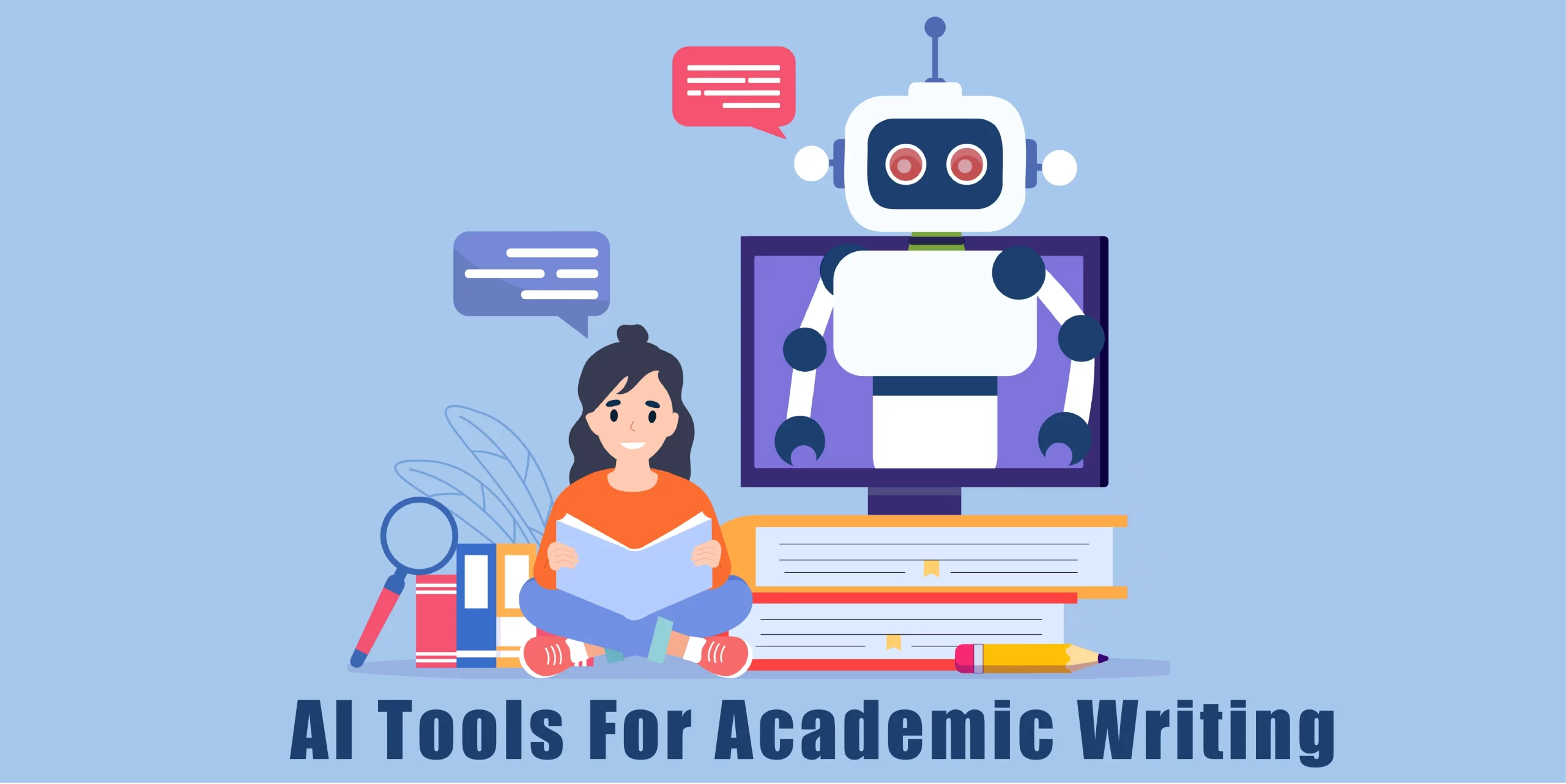Introduction
Choosing the right topic for an informative speech is crucial for capturing and maintaining the audience’s interest. A well-chosen topic not only engages the audience but also demonstrates the speaker’s knowledge and passion. The process of selecting a topic involves understanding your audience’s interests, your personal expertise, and the availability of credible sources. In today’s information-rich world, it’s essential to stand out by presenting topics that are not only relevant but also thought-provoking and insightful.
Structuring your speech effectively is equally important. A clear and logical structure helps convey your message coherently and keeps your audience engaged. The introduction should grab attention and set the stage for your topic, while the body should elaborate on key points with evidence and examples. The conclusion should reinforce your main ideas and leave a lasting impression. This guide aims to provide a comprehensive overview of how to choose and structure informative speech topics, offering practical tips and detailed examples to ensure your speech is both impactful and well-received.
By focusing on these elements, you can craft a speech that is educational and engaging, ensuring your audience walks away with a clear understanding of the topic. Whether you’re speaking about technology, the environment, education, or health, the principles outlined here will help you deliver a compelling presentation. This guide will help you navigate the complexities of topic selection and speech structuring, ensuring your speech is memorable and effective.
Choosing the Right Informative Speech Topic
Selecting an appropriate topic is the first step in crafting an effective informative speech. Here are some key considerations:
Informative Speech Topics About Technology
- The Impact of 5G Technology on Communication and Data Exchange
- Explore how 5G technology is revolutionizing the way we communicate and handle data.
- Example: Increased speed and connectivity provided by 5G enable smart cities and IoT.
- The Role of Robotics in Healthcare and Industry
- Discuss the advancements in robotics and their applications in various sectors.
- Example: The use of robotic surgery systems and industrial automation.
- Artificial Intelligence: How It Works and Its Future Implications
- Explain the principles of AI and its potential future applications.
- Example: Machine learning, natural language processing, and AI in healthcare.
- The Evolution of Social Media and Its Impact on Society
- Examine how social media platforms have evolved and their influence on social interactions.
- Example: The impact of social media on communication, privacy, and mental health.
- Cybersecurity Challenges in the Digital Age
- Discuss the importance of cybersecurity and the common challenges faced.
- Example: Major cybersecurity threats like phishing, ransomware, and data breaches.
- The Science of Blockchain Technology
- Explain how blockchain works and its potential applications beyond cryptocurrency.
- Example: Blockchain in supply chain management and secure transactions.
- The Future of Autonomous Vehicles and Smart Transportation
- Explore the development and potential impact of self-driving cars.
- Example: Autonomous vehicles transforming urban mobility and logistics.
- The Role of Big Data in Modern Businesses
- Discuss how big data analytics is transforming business operations.
- Example: Big data for market analysis and customer insights.
- Nanotechnology: Principles and Applications in Modern Science
- Explain the basics of nanotechnology and its various applications.
- Example: Nanomaterials in medicine and electronics.
- The Development and Future of the Internet of Things (IoT)
- Discuss how IoT is connecting devices and transforming everyday life.
- Example: Smart home devices and industrial IoT applications.
- The Impact of Virtual Reality on Education and Training
- Explore how VR is being used for educational and training purposes.
- Example: VR simulations for medical training and immersive learning environments.
- Biotechnology in Agriculture: Innovations and Controversies
- Discuss the advancements in biotechnology and their impact on agriculture.
- Example: Genetically modified crops and sustainable farming practices.
- The Rise of Smart Cities and Sustainable Urban Development
- Explain how technology is being used to create smart and sustainable cities.
- Example: Smart grids and intelligent transportation systems.
- Quantum Computing: How It Works and Its Potential
- Explore the principles of quantum computing and its future applications.
- Example: Quantum computers revolutionizing cryptography and complex problem-solving.
- The Role of Wearable Technology in Healthcare
- Discuss how wearable devices are transforming health monitoring and management.
- Example: Fitness trackers and smartwatches in managing chronic conditions.
Informative Speech Topics About Environment
- The Causes and Effects of Global Warming
- Explain the scientific principles behind global warming and its impact on the planet.
- Example: The greenhouse effect and its consequences for global temperatures and sea levels.
- Renewable Energy Sources: Types, Benefits, and Challenges
- Discuss different renewable energy sources, their advantages, and the challenges they face.
- Example: Solar, wind, and hydropower, and the obstacles to their widespread adoption.
- The Impact of Deforestation on Climate and Wildlife
- Explore how deforestation affects the environment and biodiversity.
- Example: Forests’ role in carbon sequestration and habitat loss.
- Ocean Acidification: Causes, Effects, and Solutions
- Explain what ocean acidification is and its impact on marine life.
- Example: Increased CO2 levels lowering ocean pH and affecting coral reefs.
- The Science of Recycling: Processes and Benefits
- Discuss how recycling works and its benefits for the environment.
- Example: The recycling process for different materials and its role in waste reduction.
- Air Pollution: Sources, Health Impacts, and Control Measures
- Explore the sources of air pollution and its effects on health and the environment.
- Example: Industrial emissions, vehicle exhaust, and strategies for air quality improvement.
- The Role of Wetlands in Environmental Protection
- Explain the importance of wetlands and their role in environmental conservation.
- Example: Wetlands acting as natural water filters and habitats for diverse species.
- Sustainable Agriculture Practices and Their Benefits
- Discuss sustainable farming practices and their environmental benefits.
- Example: Crop rotation, organic farming, and reduced pesticide use.
- The Consequences of Melting Polar Ice Caps
- Explore the impact of polar ice melt on sea levels and global climate.
- Example: Ice melt contributing to rising sea levels and affecting coastal communities.
- Urban Sprawl and Its Environmental Impact
- Discuss the effects of urban sprawl on the environment and possible solutions.
- Example: Urban planning to mitigate the negative impacts of sprawl.
- Water Scarcity: Causes, Effects, and Solutions
- Explain the causes of water scarcity and its impact on communities.
- Example: Overuse, pollution, and climate change as factors, and potential solutions.
- The Effects of Plastic Pollution on Marine Life
- Discuss how plastic pollution affects marine ecosystems.
- Example: The impact of microplastics on marine animals and ocean health.
- Climate Change and Its Impact on Global Weather Patterns
- Explore how climate change is altering weather patterns worldwide.
- Example: The increase in extreme weather events and their global implications.
- The Importance of Conservation Efforts for Endangered Species
- Explain the need for conservation and efforts to protect endangered species.
- Example: Successful conservation programs and species recovery stories.
- Eco-Friendly Technologies and Green Innovations
- Discuss new technologies and innovations aimed at reducing environmental impact.
- Example: Developments in green energy, sustainable materials, and waste management.
Informative Speech Ideas On Education
- The Evolution of Educational Systems Around the World
- Compare and contrast different educational systems and their historical development.
- Example: Differences between traditional and modern educational systems.
- The Impact of Technology in Modern Education
- Examine how technology is transforming educational practices and accessibility.
- Example: Online learning platforms and digital classrooms.
- Understanding Different Learning Styles and Their Importance in Education
- Discuss various learning styles and how they influence educational outcomes.
- Example: Visual, auditory, and kinesthetic learning styles.
- The Benefits and Challenges of Online Learning
- Explore the advantages and potential drawbacks of online education.
- Example: Flexibility and accessibility versus the need for self-discipline.
- The Role of Extracurricular Activities in Student Development
- Discuss how extracurricular activities contribute to overall student growth.
- Example: Sports, arts, and clubs enhancing social and leadership skills.
- The History and Significance of Montessori Education
- Explain the principles of Montessori education and its impact on learning.
- Example: Child-centered learning and its benefits for early education.
- The Importance of Early Childhood Education on Long-Term Development
- Discuss how early education shapes cognitive and social development.
- Example: The impact of preschool programs on academic and social skills.
- The Effects of Standardized Testing on Students and Education Systems
- Explore the impact of standardized testing on educational outcomes.
- Example: Pros and cons of standardized tests in measuring student achievement.
- The Role of Education in Fostering Global Citizenship
- Discuss how education promotes global awareness and citizenship.
- Example: International programs and multicultural curricula.
- Comparative Education: Different Schooling Systems Across Countries
- Compare various educational systems and their approaches.
- Example: The differences between the US, Finnish, and Japanese educational systems.
- The Impact of Teacher-Student Relationships on Learning Outcomes
- Explain how strong teacher-student relationships can enhance learning.
- Example: Trust and communication fostering better academic performance.
- The Role of Physical Education in Schools
- Discuss the importance of physical education for student health and well-being.
- Example: PE programs promoting physical fitness and teamwork.
- The Challenges and Rewards of Special Education
- Explore the unique challenges and benefits of special education.
- Example: Individualized education plans (IEPs) and inclusive classrooms.
- The Importance of Arts Education in Cognitive and Emotional Development
- Discuss how arts education contributes to overall development.
- Example: Music and visual arts enhancing creativity and critical thinking.
Structuring Your Informative Speech
A well-structured speech is essential for clarity and engagement. Here’s a breakdown of the key components:
1. Introduction
Crafting a Compelling Opening Statement
Begin with an attention-grabbing fact, quote, anecdote, or question to draw in your audience. For instance:
- “Imagine a world where cars drive themselves, drastically reducing traffic accidents and emissions. This is the promise of autonomous vehicles.”
Stating the Thesis Clearly
Your thesis should succinctly outline the main point of your speech. For example:
- “Today, I will explore the development, benefits, and challenges of autonomous vehicles.”
Providing a Brief Overview of Main Points
Preview the main points you will cover to give your audience a roadmap of your speech. For example:
- “We will start by looking at the history and development of autonomous vehicles, then move on to their potential benefits, and finally discuss the challenges they face.”
2. Body
Dividing Content into Clear Main Points and Subpoints
Organize your content into distinct sections, each focusing on a specific aspect of your topic. Use subpoints to elaborate on each main point.
Main Point 1: History and Development of Autonomous Vehicles
Subpoint 1.1: Early Innovations in Self-Driving Technology
- Discuss the initial development of self-driving technology in the 20th century.
- Example: The first self-sufficient and truly autonomous cars appeared in the 1980s, with projects like Carnegie Mellon University’s Navlab and Mercedes-Benz’s EUREKA Prometheus Project.
Subpoint 1.2: Advances in AI and Sensor Technology
- Examine how advances in artificial intelligence and sensor technology have driven the development of autonomous vehicles.
- Example: AI algorithms like neural networks and technologies such as LIDAR and computer vision play crucial roles in enabling cars to navigate complex environments.
Main Point 2: Benefits of Autonomous Vehicles
Subpoint 2.1: Safety Improvements
- Discuss how autonomous vehicles can reduce accidents caused by human error.
- Example: According to the National Highway Traffic Safety Administration (NHTSA), 94% of serious crashes are due to human error.
Subpoint 2.2: Safety Improvements
- Discuss how autonomous vehicles can reduce accidents caused by human error.
- Example: According to the National Highway Traffic Safety Administration (NHTSA), 94% of serious crashes are due to human error. Autonomous vehicles can potentially reduce these accidents by utilizing advanced sensors and AI to make split-second decisions, avoiding collisions more effectively than human drivers.
Subpoint 2.3: Environmental Benefits
- Explore the potential environmental benefits, such as reduced emissions and improved fuel efficiency.
- Example: Autonomous vehicles can optimize driving patterns to reduce fuel consumption and emissions. For instance, smooth acceleration and braking, along with route optimization, contribute to lower fuel usage and reduced greenhouse gas emissions.
Main Point 3: Challenges Facing Autonomous Vehicles
Subpoint 3.1: Technical and Regulatory Hurdles
- Discuss the technical challenges and regulatory issues that need to be addressed.
- Example: Ensuring the reliability of AI in diverse driving conditions is a significant challenge. Additionally, comprehensive regulations must be developed to address liability issues in case of accidents involving autonomous vehicles.
Subpoint 3.2: Ethical and Social Implications
- Explore the ethical and social implications of widespread autonomous vehicle adoption.
- Example: The impact on employment in driving-related industries and ethical decisions made by AI in unavoidable accident scenarios are major concerns. Policymakers and engineers must consider these implications to ensure responsible deployment.
3. Conclusion
Summarizing Key Points
- Recap the history, benefits, and challenges of autonomous vehicles.
- Example: “We’ve explored the journey of autonomous vehicles from early innovations to the present, highlighting their potential benefits in terms of safety and the environment, as well as the challenges that must be overcome.”
Reinforcing the Thesis
- Reinforce the central message of your speech.
- Example: “While autonomous vehicles promise a safer and more efficient future, addressing the technical, regulatory, and ethical challenges is crucial for their successful integration into society.”
Ending with a Memorable Statement
- Conclude with a thought-provoking statement or call to action.
- Example: “As we stand on the brink of a transportation revolution, it’s up to us to ensure that autonomous vehicles are developed and deployed responsibly, benefiting society as a whole.”
Research and Preparation Tips
Conducting Thorough Research
Identifying Credible Sources:
- Start by identifying credible sources for your speech. Credible sources include academic journals, books, reputable news organizations, and official websites (such as government or educational institutions).
- Use databases like Google Scholar, JSTOR, and PubMed to find peer-reviewed articles and research papers.
- When using websites, check the domain. Websites ending in .edu, .gov, and .org are typically more reliable than commercial sites ending in .com.
Example:
- For a speech on the impact of 5G technology, refer to studies published in telecommunications journals or reports from regulatory bodies like the Federal Communications Commission (FCC).
Gathering Diverse Perspectives:
- Ensure your research includes diverse perspectives to provide a balanced view. This can include different geographical viewpoints, opinions from various experts, and case studies from multiple industries.
- Incorporate statistical data, expert opinions, and real-world examples to strengthen your speech.
Example:
- When discussing global warming, include data from the Intergovernmental Panel on Climate Change (IPCC), perspectives from environmental NGOs, and case studies from different countries experiencing climate change effects.
Organizing Information
Creating a Detailed Outline:
- A detailed outline helps organize your speech logically and ensures you cover all necessary points. Begin with an introduction, followed by the body (with main points and subpoints), and conclude with a summary.
- Use bullet points or numbering to organize your ideas clearly. Ensure each main point is supported by subpoints, evidence, and examples.
Example:
- Introduction:
- Hook: Start with a startling fact or question.
- Thesis statement: Clearly state the purpose of your speech.
- Preview: Briefly outline the main points.
- Body:
- Main Point 1: History and development.
- Subpoint 1.1: Early innovations.
- Subpoint 1.2: Recent advancements.
- Main Point 2: Benefits.
- Subpoint 2.1: Safety improvements.
- Subpoint 2.2: Environmental benefits.
- Main Point 3: Challenges.
- Subpoint 3.1: Technical hurdles.
- Subpoint 3.2: Ethical implications.
- Conclusion:
- Summarize key points.
- Restate thesis.
- Memorable closing statement.
Prioritizing Key Points:
- Focus on the most important information that supports your thesis. Avoid overloading your speech with too much data, which can overwhelm your audience.
- Prioritize clarity and relevance. Ensure each point directly relates to your main topic and helps build your argument or explanation.
Example:
- In a speech about the benefits of renewable energy, prioritize discussing the major types of renewable energy (solar, wind, hydro) and their most significant benefits and challenges rather than delving into less impactful or niche technologies.
Practicing Delivery
Rehearsing with Notes:
- Practice delivering your speech several times to become comfortable with the material. Use notes to keep you on track but avoid reading directly from them.
- Time yourself to ensure your speech fits within any given time limits and adjust as necessary.
Example:
- Record yourself practicing and watch the playback to identify areas for improvement, such as pacing, volume, and clarity.
Engaging with the Audience:
- Make eye contact with your audience to establish a connection and engage them. Use gestures and vary your tone of voice to maintain interest.
- Encourage interaction by asking rhetorical questions or prompting the audience to think about certain points.
Example:
- If discussing the impact of social media on mental health, ask, “How many of you have felt overwhelmed by social media?” to engage your audience and make the topic more relatable.
Conclusion
In conclusion, the importance of choosing the right topic and structuring your speech effectively cannot be overstated. A well-chosen topic that resonates with your audience, combined with a clear and logical structure, is critical for delivering a compelling and informative presentation. This guide has provided a comprehensive approach to selecting and organizing your speech, emphasizing the need for thorough research, detailed organization, and engaging delivery.
Utilize the tips and examples provided here to prepare and deliver your speech with confidence. By focusing on credible sources, diverse perspectives, and clear outlines, you can ensure your content is both informative and persuasive. Engaging with your audience through effective delivery techniques, such as eye contact and varied tone, further enhances the impact of your speech.
Remember, the goal of an informative speech is to educate and engage your audience, leaving them with a deeper understanding of the topic. By following these guidelines and examples, you can craft a speech that is both educational and engaging, making a lasting impression on your audience. Good luck in your preparation and delivery, and may your speech be both impactful and memorable.










